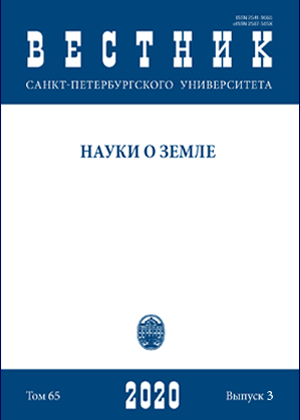Resilience of Arctic cities: an analysis of the approaches
DOI:
https://doi.org/10.21638/spbu07.2020.305Abstract
The article presents a critical analysis of research areas of substantiality and resilience of Arctic cities; we also analyze the evolution of approaches on the development of the Far North in Russian and foreign scientific literature. All these varied approaches could be divided into two large groups: one group includes the approaches with priority attention to internal factors of development of the Arctic city and the second one pays attention to external factors. The choice of position here is fundamentally important for understanding the essence of individual areas of research. Traditional Soviet approaches to areas of new development, as well as modern work on remoteness, are approaches with a great emphasis on external factors. The concept of sustainable development is focused on the study of the stability of the object of study in relatively stable conditions, while the concept of resilience is developed in terms of shock effects. As a result of the synthesis of different approaches, a conceptual model of the Arctic city was developed, which includes the following subsystems: economic specialization, life support, natural and environmental, social and cultural, knowledge and information, and administrative and management. The basic level of ensuring the resilience of the entire system of the Arctic city is determined by its internal structure, and in particular, the flexibility of the links between individual subsystems (on the contrary, the rigidity of the links leads to classical lock-in characteristic of single-industry cities, environmentally adverse consequences, etc.). In addition, the overall stability/resilience of the system is provided by the characteristics of the organization and the reliability of individual subsystems, and thirdly, the features of relationships with other territories.
Keywords:
Arctic, Far North, city, resilience, sustainable development
Downloads
Downloads
Published
How to Cite
Issue
Section
License
Articles of "Vestnik of Saint Petersburg University. Earth Sciences" are open access distributed under the terms of the License Agreement with Saint Petersburg State University, which permits to the authors unrestricted distribution and self-archiving free of charge.






